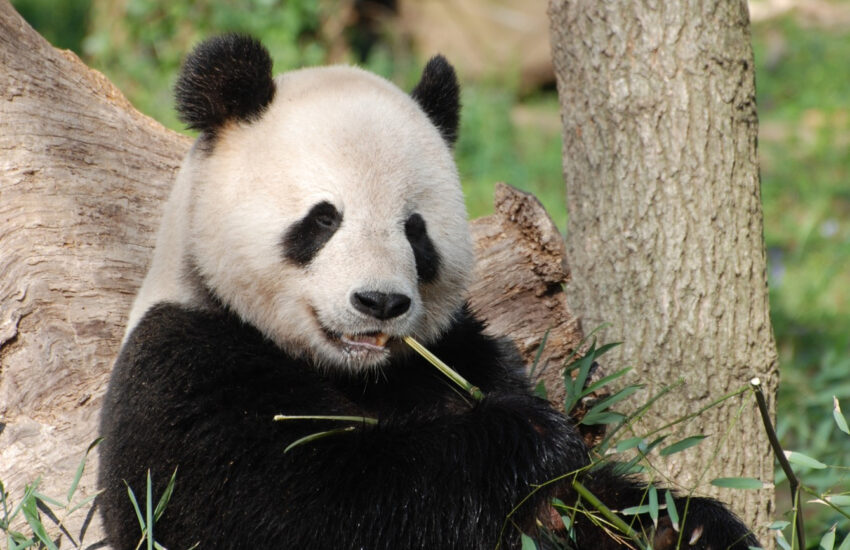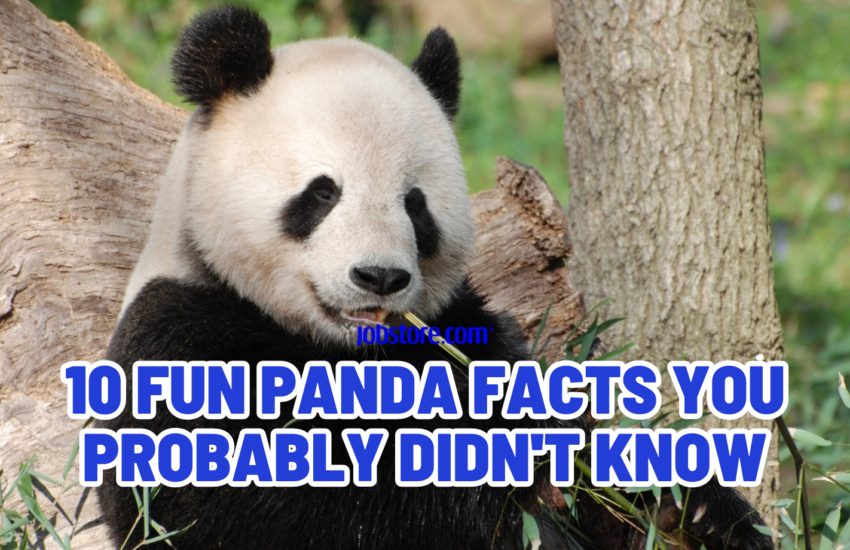We think of cute black and white bears when we think of giant panda. They are cute, and people all over the world like them. But do you know them well?
Here are 10 interesting facts about giant panda that will help you learn more about them.
1. One panda year is like three human years.
In terms of human life span, a panda year is about the same as three human years. In the wild, giant pandas live for 18–20 years, but in captivity, they can live for 25–30 years. At 38 years and 4 months old, Xinxing (also known as “New Star”) was the oldest giant panda in the world. He lived at the Chongqing Zoo from 1982 to 2020. That’s the same as 115 years in our time.

ALSO READ: International Cat Day: 5 Ways to Make Your Cats Happy
2. Pandas have a total of six “fingers”!
The 6th “finger” of a panda is like our thumb. It works like a thumb, but it’s a strange wrist bone or opposable paw heel with strong muscles but no joints. This lets them grab food.
With their 6th fingers, they can press the bamboo into the shape of a big cigar, which makes it easy to eat.
3. Pandas will abandon a child if she has twins.
Pandas in the wild usually only have one cub, but pandas in zoos are more likely to have twins. In the wild, a mother panda will only feed the cub she thinks is better if she has two cubs. The other one is left to do what it needs to do.
This is because a cub that has just been born is very weak. Cubs start eating bamboo when they are about 12 months old. Before that, they needed their mother for everything. So, in the wild, female pandas can’t take care of two kids because they don’t have enough milk or energy.
A cub stays with its mother until it is about a year and a half old, and the mother is pregnant again. If the mother doesn’t get pregnant, the cub will stay with its mother until it is two and a half years old.
4. Pandas like to be alone.
Giant pandas are animals that live alone. They have their own area in the wild, which they don’t let other pandas into.
The reason is that giant pandas eat bamboo and don’t need to hunt together. They have to eat a lot of bamboo to meet their food needs. If giant pandas lived in groups, they would fight over getting enough bamboo, which would be bad for all of them and make it harder for them to stay alive.
Usually, a panda needs 3–8 square kilometers (1–3 square miles) of bamboo forest to live independently.
5. A panda can poop 28kg per day!
A panda eats mostly bamboo, but its digestive system is still designed to break down meat. Giant pandas can only digest about 20% of the bamboo they eat, and bamboo itself is not very nutritious. So, pandas must eat a lot of bamboo to keep up their energy and poop.
Every 15 to 20 minutes, giant pandas have to go. The bamboo they don’t digest makes up most of their waste.
In the past, people who lived there used the pieces of bamboo still in the poop to make picture frames and bookmarks.
6. Pandas used to eat meat.
When there were no more big enemies like saber-tooth tigers, pandas didn’t have to be as fast, so they specialized in eating bamboo to keep from going extinct.
People may think that they only eat bamboo, but also like food and can eat meat.
7. The cubs of pandas are pink.
A new panda cub only weighs 100 grams (3.5 oz) when born. They have no hair, are pink, and can’t see. After about three weeks, their black-and-white coat comes out.
8. Pandas don’t hibernate in the winter.
Giant pandas don’t hibernate because they can’t get big enough to sleep through the winter on a bamboo diet.
The cold doesn’t bother pandas. Even when it’s as cold as -4°C (25°F), they can still be seen walking through thick snow in bamboo woods.
9. Pandas mark their area with odors.
Giant pandas mark their area by urinating on tree bark, rubbing their scent glands, and doing other things that leave their scent on the bark. A general rule in the panda society is that the higher they can mark their scent on a tree, the stronger they are.
Trying to pee higher and rub higher is a way to compete for mating rights without getting into a fight.
10. The giant panda no longer faces extinction!
Because of attempts to save giant pandas, there are now more than 2,200 of them. Their number in the wild has grown to 1,864, and there are now 422 giant pandas born in captivity. Their threat level has gone from “endangered” to “vulnerable”.
Anisa is a writer who focuses on career and lifestyle topics in an effort to motivate both job searchers and employers towards greater fulfillment in their professional lives.
Reach me at anisa@jobstore.com.

